
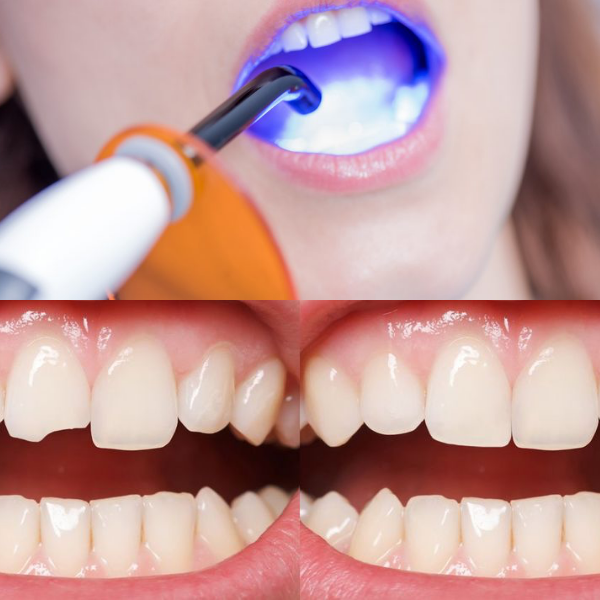
Bonding
Enhance your smile, safely and affordably.
Bonding is a popular method to enhance the aesthetics of your smile. Bonding can be used to correct cracks or gaps in teeth, as a filling after a cavity has been removed, or to cover up stains or discolored teeth.
A composite resin is used on the affected tooth or teeth. It is molded and sculpted over an adhesive gel that is placed on the tooth. After the resin has been applied an ultraviolet light is used to harden the resin, which is then polished to give you a fresh, new smile.
Bonding is an obvious improvement over unsightly silver amalgam fillings. With the advancements in dental technology, bonding usually lasts for over 10 years. It is a safe, affordable, and attractive solution for many dental problems.
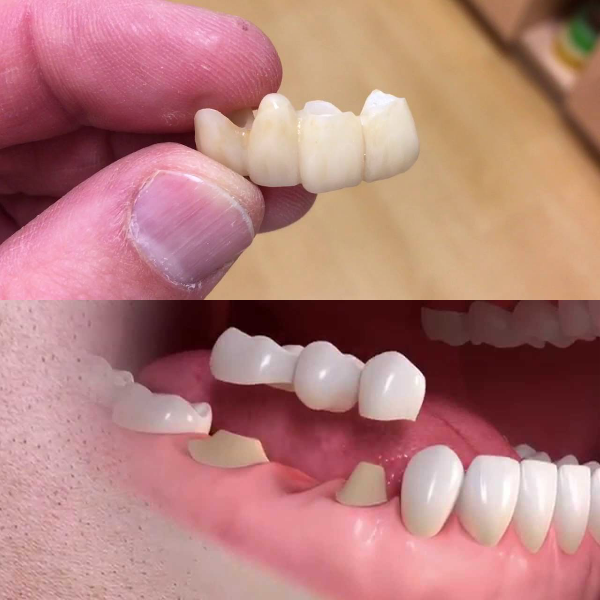
Bridges
Your existing teeth become the base to replace what’s missing.
Dental bridges are a great way to replace missing teeth. Your existing teeth are used to literally create a bridge to cross the area where your tooth is missing. Bridges are made from gold, metal, alloys or porcelain to ensure that they are strong and durable.
The process of creating a bridge begins by creating abutments out of your existing teeth where the bridge will be attached. The existing teeth are recontoured to provide a base for the bridge. After the abutments have been created, a mold is taken of the area and sent to a dental lab. The lab is able to use the mold to create a bridge that will fit properly and feel as close to your natural teeth as possible. The bridge consists of two crowns on either end to place on the abutments and a pontic, which is the new tooth that replaces your missing tooth.
We will fit you with a temporary bridge while we wait for the lab to craft your permanent bridge. This will protect the abutments and the exposed gum areas and look more appealing than having a missing tooth. When the permanent bridge has been created, you will have a follow up visit to set the bridge. It will be placed on the abutments, and the dentist will then use an adhesive to make sure that the bridge is set.
The bridge may take a little while to get used to, but after a few days, it should feel like you have your own teeth back again. You should eat soft foods for the first few days after having your bridge placed. After the initial phase, you will be able to eat whatever you want with no issues.
If you are missing a tooth, you should strongly consider having it replaced. Besides the aesthetic disadvantage of missing a tooth, it could also cause structural changes to your mouth and jaw, as well as making it difficult to eat or speak properly.
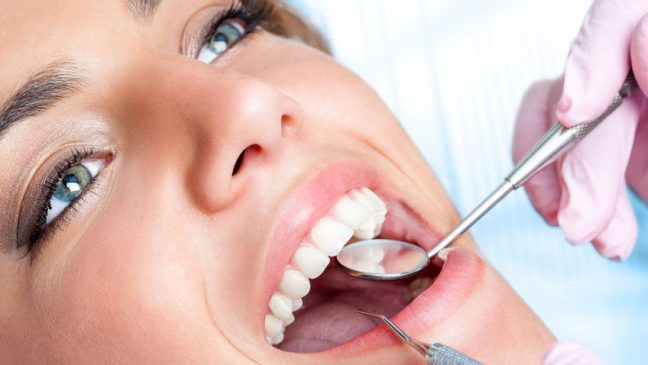
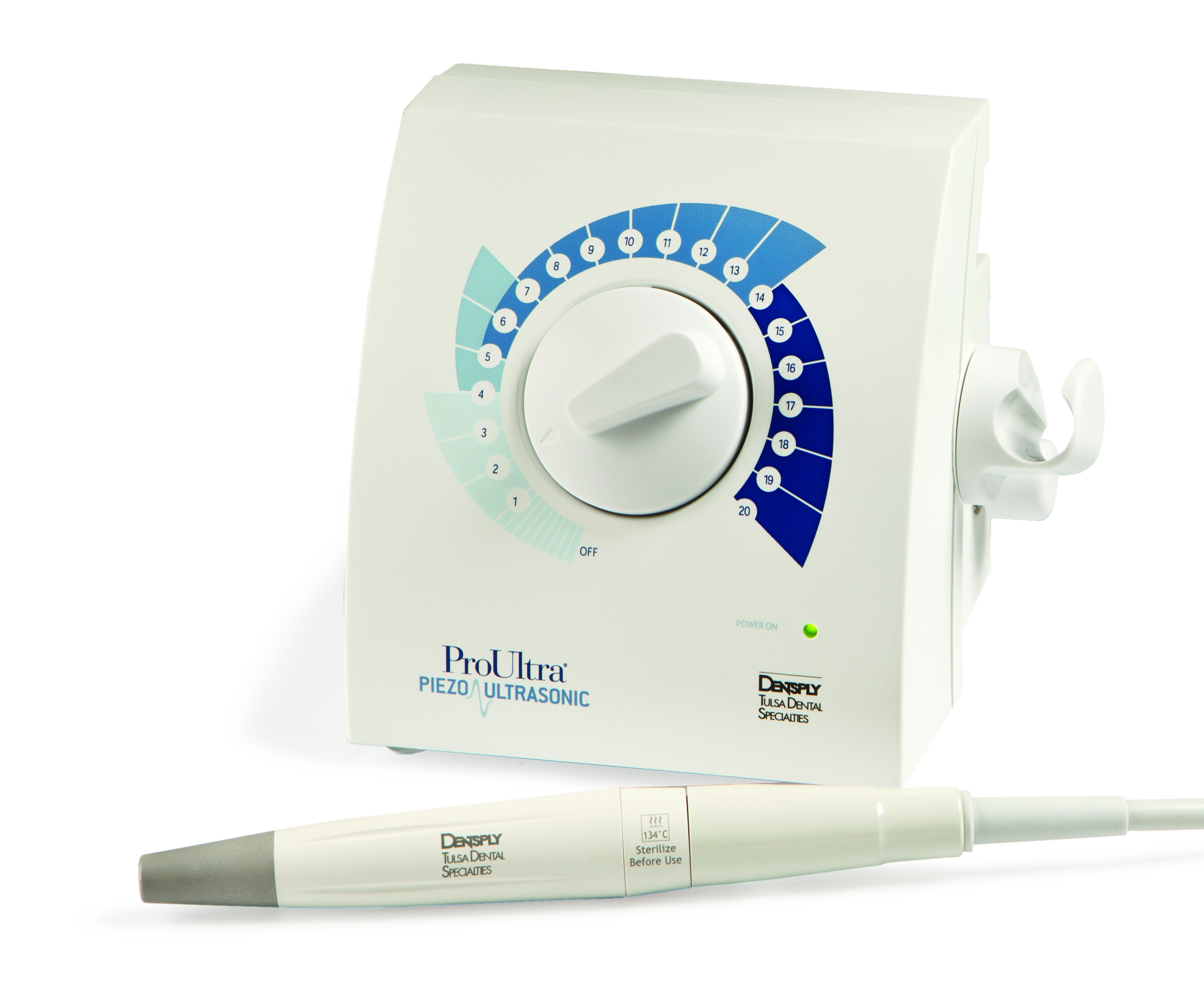
Cleaning
A professional, comfortable and personal cleaning experience.
While at our office, we make sure that you receive the highest level of service and ensure that our dental work is of the highest quality.
Diagnostic services may include:
- Reviewing and updating medical history, including information about heart problems, pregnancy, diabetes and medications, which may have an impact on your oral health
- Oral cancer examination and screening
- Evaluation of gum tissue
- Checking biting, chewing and swallowing patterns
- X-rays or examination of teeth to detect decay
- Referral to specialists for specific treatment
Preventive services may include:
- Removal of plaque and tartar
- Stain removal
- Fluoride application
- Sealants (for children)
- Polishing teeth, including fillings and crowns
- Cleaning and adjustment of dentures and partial dentures
Educational services may include:
- Tooth brushing and flossing instructions
- Nutritional counseling
- Recommendations for future treatment: when to return for follow-up hygiene treatment, periodontal (gum) concerns or restorative options
- Evaluation of self-care effectiveness
- Tobacco-cessation counseling
The Dial Down Service
As an extension of our dental excellence mission, this technology + service, allows us to offer patients with oral sensitivity to be able to control the pressure of the cleaning process.
Your Personal Dental Hygiene
To ensure that you maintain great oral health, this level of quality needs to extend into your personal oral hygiene routine. We can help you establish a dental hygiene routine that will keep your teeth healthy and white. If you have any questions about your current hygiene plan please ask us.
Your teeth are not the only important part of your mouth. Your gums are essential to oral hygiene as well. We can provide periodontal cleanings and treatment, or refer you to one of our recommended specialists. Please let us know if you have any questions.
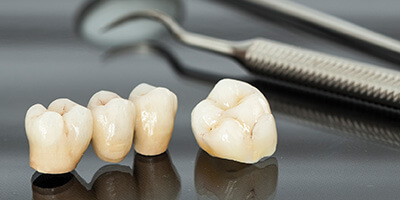
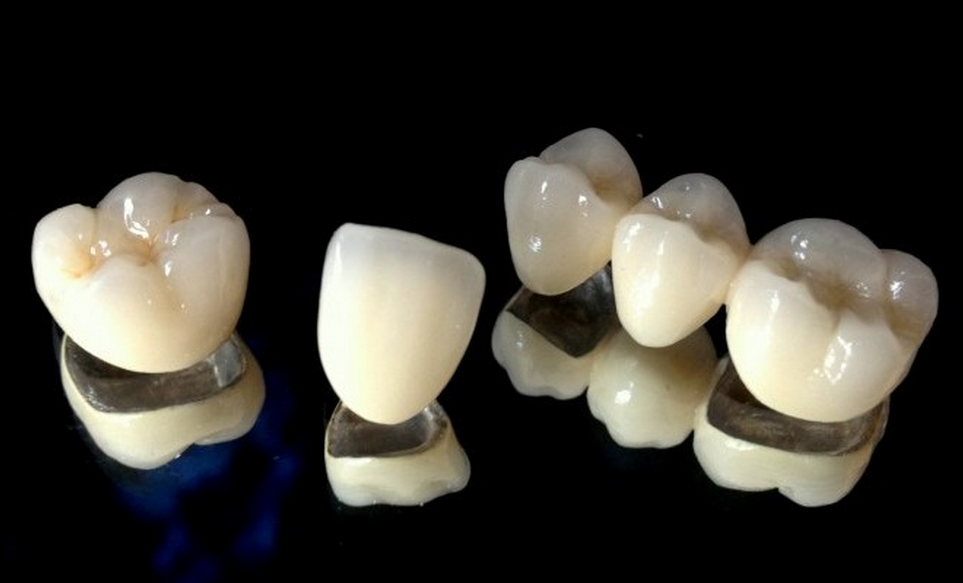
Crowns
An important option for aging teeth that will restore your smile.
Over time our teeth begin to weaken and become more susceptible to problems such as decay, cracks, discoloration and others. If you feel your smile isn’t what it once was, crowns can help you recover your smile. If your dentist notices that a tooth is decayed or seems weakened/cracked, a crown may be necessary to make sure that there are no additional problems with the tooth. In cases like this a filling or bonding will not be sufficient.
Crowns can be made from porcelain, porcelain fused to metal or a full gold crown. To maintain a natural look and feel, a porcelain finished crown is best, as it can be matched to the shade of your other teeth. This will allow it to blend in and appear just like one of your natural teeth.
The process of installing a crown takes 2-3 visits to the dentist. On the first visit, the tooth will be reshaped by filing down the enamel so that the crown can be placed over it. You will be given a local anesthetic before this part of the procedure so that you do not experience any discomfort. Once the tooth has been reshaped, a mold will be taken of that tooth and the surrounding teeth. This mold will be sent to a dental lab so that your new crown can be made to fit in the spot created for it, as well as look the same relative to the surrounding teeth. Before leaving, your dentist will fit you with a temporary crown until your permanent crown is ready.
The crown takes about 2-3 weeks to be returned to your dentist. At this time, you will have another appointment to place and fit the permanent crown. You will, again, have a local anesthetic to numb the area, and the tooth will be placed using bonding agent to ensure the tooth sets in place. When you look in the mirror, you will see your old smile back. Crowns are durable and will usually last about 10-15 years. You should care for it as you would any of your other teeth with regular brushing and flossing.
Inlays & Onlays
The better partial crowns “lay” ahead.
Inlays and onlays are often referred to as partial crowns. They use the existing tooth as a base and fit the inlay or onlay onto the tooth. This is done to strengthen the tooth, restore its shape, and prevent further damage. An inlay is done when there is no damage to the cusps of the tooth and the inlay can be placed right on the tooth. An inlay is used when the damage is a little more extensive.
The decayed area of the tooth is first removed during the procedure. A mold of the tooth is then taken and sent to a dental lab. They create a restoration made from porcelain, gold, or a composite resin. The restoration takes about 2-3 weeks to make, so a temporary inlay or onlay will be placed on the tooth for that time. During your next visit the inlay or onlay will be placed into your mouth and set with cement. Your tooth will look natural and you or anyone else won’t be able to tell the difference.
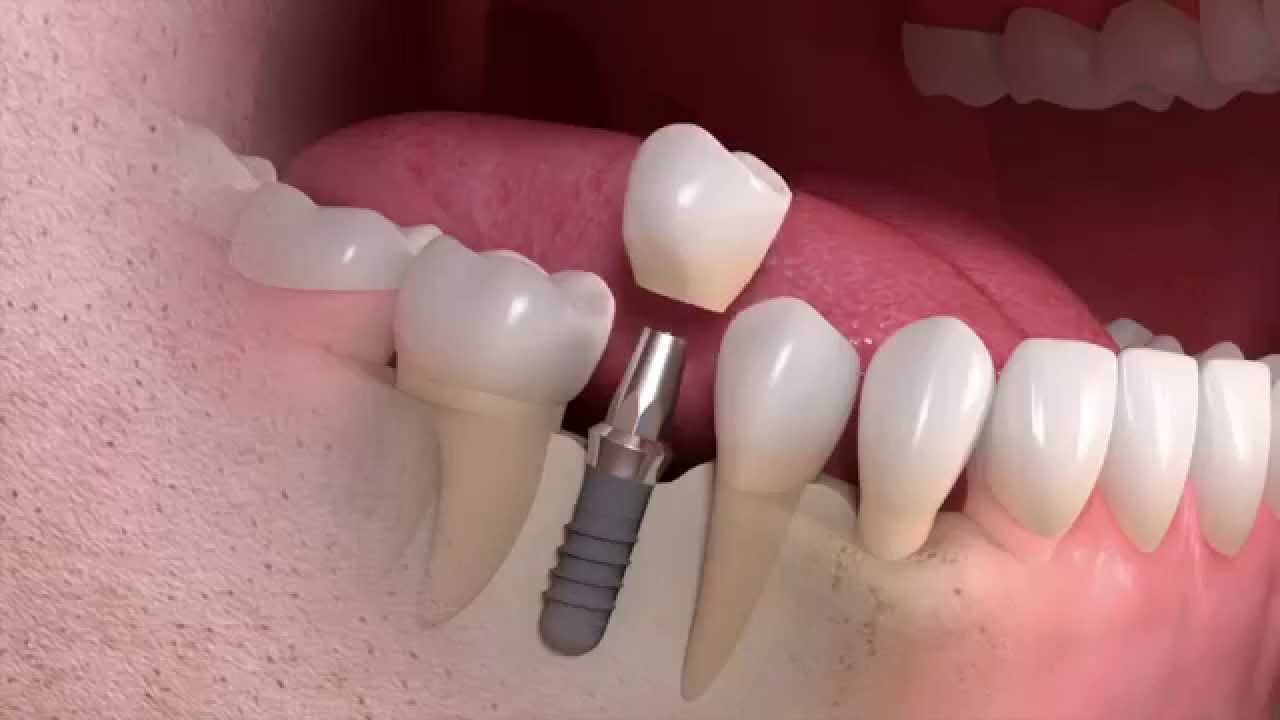
Dental Implants
The permanent solution that looks and feels right.
Dental implants are a permanent, appealing solution to replace missing or extracted teeth. They are better than other alternatives, like bridges, because no additional teeth need to be altered to place the new tooth.
The entire implant process is performed over the course of a few months. The first part of the process is to install the implant itself, where a screw is placed into the jaw bone. An incision is made in the gum so that the implant can be inserted. Multiple implants can be placed at once, if necessary. After the implants are placed, the gums are sutured.
The implant must be allowed about 3-6 months to heal, and during this time the jaw bone will form around the implant in a process called osseointegration. During this healing time, you can have temporary crowns installed so that you can eat and speak normally and maintain a proper aesthetic appearance for your smile.
After the implant has healed, it is time to place an abutment on the implant. The abutment serves as the base for your new tooth. Once this is placed, an impression of the abutment is taken and is used to create your permanent restoration. Some offices have an onsite lab to create the crown, but others will have to send it to an outside lab. Once the restoration is completed, you can return to the office to attach the restoration permanently.
Your smile will look just like it used to, and after a short period of getting used to the implant, it will feel just like one of your own teeth.
FAQs
What is a dental implant?
A dental implant is a permanent new root for a missing tooth. It is a titanium screw that is placed into the jaw bone. An abutment and crown is then placed on the implant to provide a new tooth that is permanent and looks just like a natural tooth.
How are dental implants different than dentures?
Dentures are a removable set of teeth, or partial set of teeth, that need to be removed and cared for in a special manner. They can often feel bulky and may be difficult to get used to. Dental implants are a permanent replacement for missing teeth that can be cared for just like natural teeth.
What are the benefits of dental implants?
Dental implants look and feel like real teeth- they are permanent, you can eat the foods you want without any fear of embarrassment. The procedure is very successful and fairly inexpensive.
Who can place a dental implant?
Your dentist may be able to perform implants in their own office based on their training. If not, they will recommend you to an implantologist, cosmetic dentist, or another specialist that will perform the procedure.
How much do implants cost?
The price of your dental implants will vary based on the level of experience of your doctor, how many implants you are having placed, amount of insurance coverage, and more. Schedule a consultation with us to determine a price for your implants and a financing plan if necessary.
Do dental implants hurt?
No. A local anesthetic will be given before the procedure so that you do not feel any pain. If you have anxiety or fear you should discuss sedation options with your dentist.
How long do implants last?
When cared for properly, implants should last a lifetime. Proper oral hygiene and regular dental visits are essential to the success of your implant.
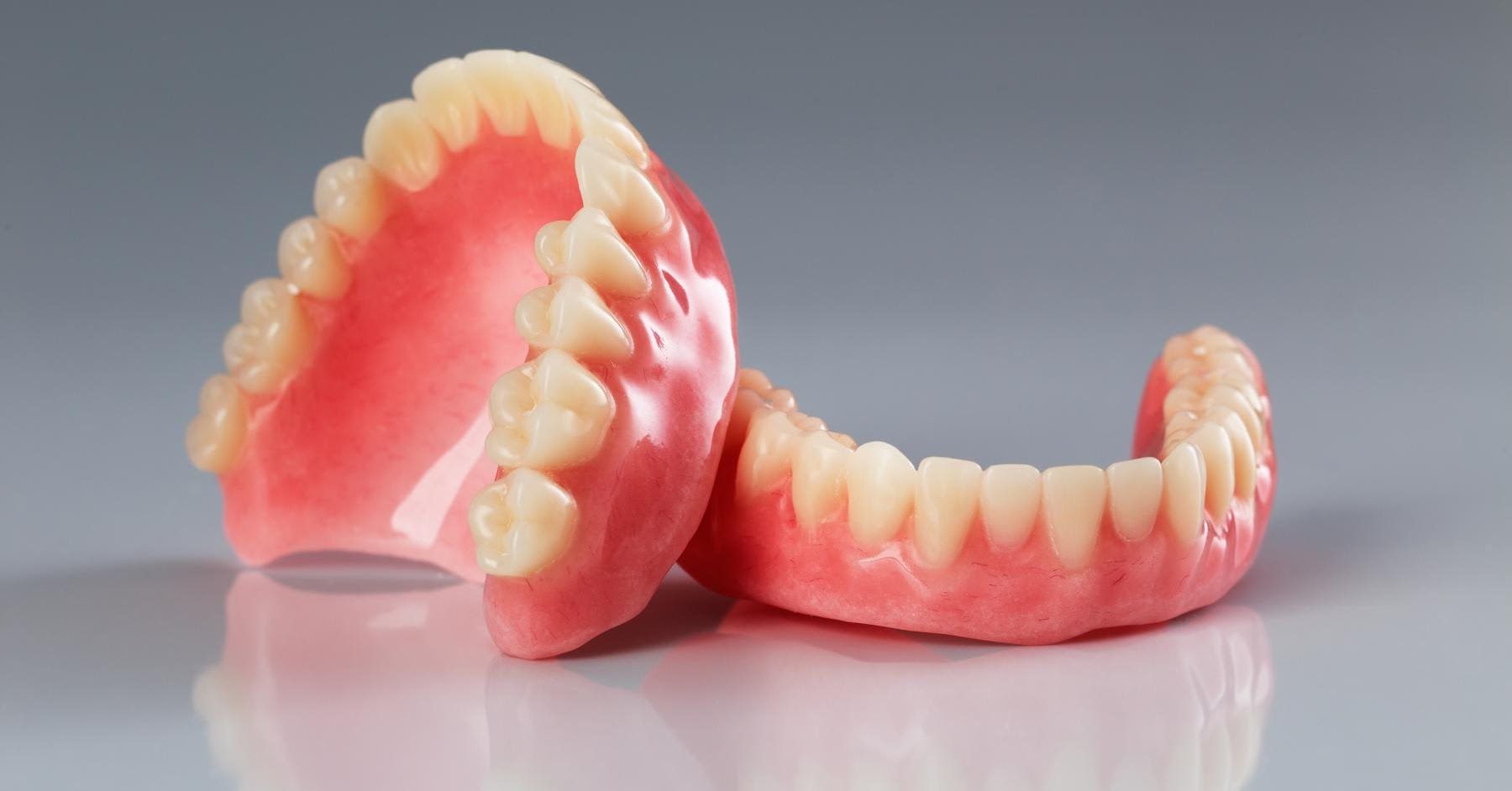
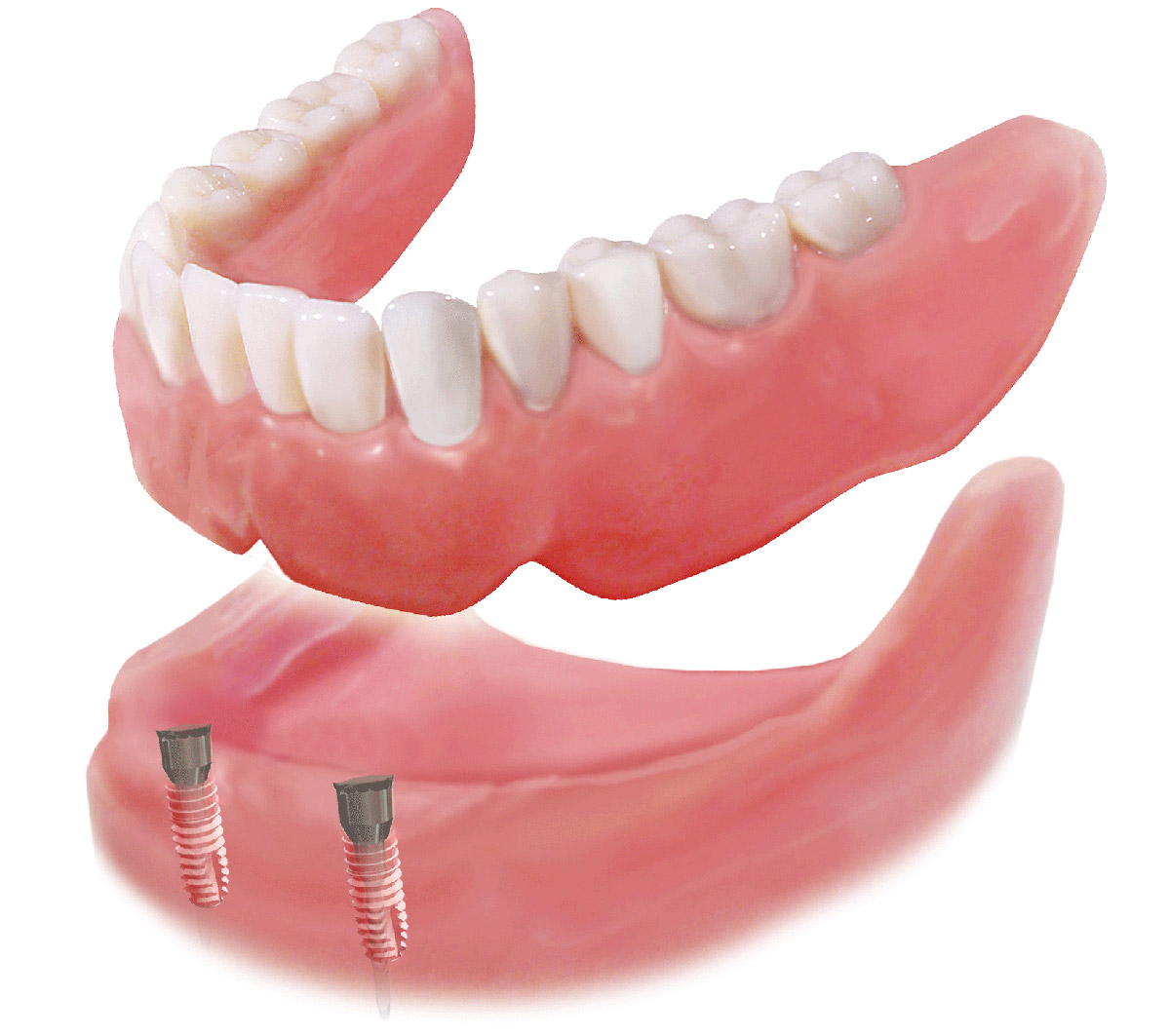
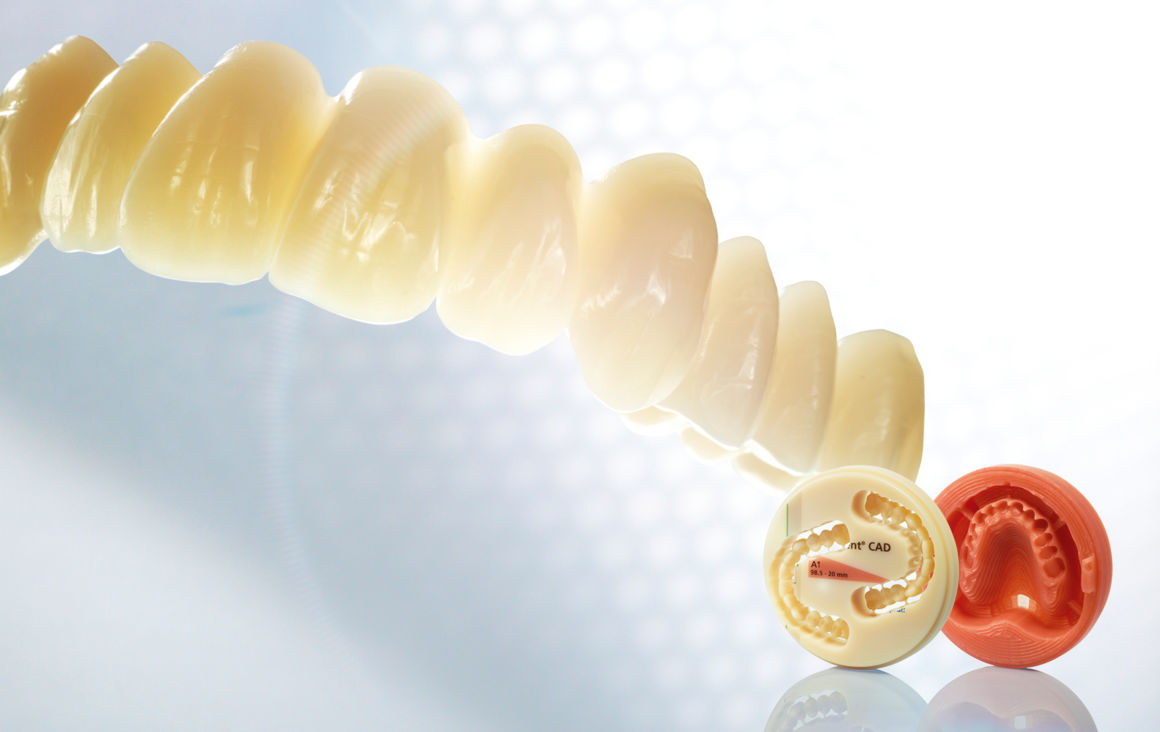
Dentures
Because its healthier for you to have a complete smile.
Dentures are a replacement for missing teeth that can be removed and put back into your mouth as you please. Depending on each individual patient case, they may receive full or partial dentures. Full dentures are used when all of the natural teeth are removed from the mouth and replaced with a full set of dentures. There are two types of full dentures.
- Conventional Full Dentures – This is when all the teeth are removed and the tissue is given time to heal before the dentures are placed. It could take a few months for the gum tissue to heal completely, and during this time you will be without teeth.
- Immediate Full Dentures – Prior to having your teeth removed, your dentist takes measurements and has dentures fitted for your mouth. After removing the teeth, the dentures are immediately placed in your mouth. The benefit is that you do not have to spend any time without teeth. You will, however, need to have a follow up visit to refit your dentures because the jaw bone will slightly change shape as your mouth heels. The dentures will need to be tightened after the jaw bone has healed.
Partial dentures are another option when not all of your teeth need to be removed. This is similar to a bridge, but it is not a permanent fixture in your mouth.
Your dentures may take some time to get used to. The flesh colored base of the dentures is placed over your gums. Some people say that it feels bulky or that they don’t have enough room for their tongue. Other times the dentures might feel loose. These feelings will affect the way you eat and talk for a little while. Over time, your mouth becomes trained to eat and speak with your dentures and they begin to feel more and more like your natural teeth. They may never feel perfectly comfortable, but it is much better than the alternative of not having teeth.
Even though dentures are not real teeth, you should care for them like they are. You should brush them to remove plaque and food particles before removing your dentures. After they have been removed you should place them directly into room temperature water or a denture cleaning solution. Never use hot water because it could warp the dentures. Your dentures are delicate, so make sure you are careful when handling them so you don’t drop them. Also, never try to adjust your dentures yourself. You could ruin them, so you should always seek assistance from your dentist if they feel uncomfortable or loose.


Root Canal
Healthier and pain free—will make you smile.
Endodontics is the dental specialty that deals with the nerves of the teeth. Root canals are probably the most notorious procedure in dentistry and the most common procedure relating to endodontics. When a tooth becomes infected it is usually related to the nerves in the root of the tooth. The infected nerves need to be removed. If left untreated an infection can turn into an abscess, which is a much more serious problem that includes bone loss in the jaw.
The area around the tooth is numbed with a local anesthetic to start the procedure. The dentist will then drill down into the tooth to create an opening into the canal. They will then be able to remove infected tissue and clean the canal. After the infection has been removed, the space if filled with a sealant called gutta percha. It is highly recommended that a tooth that has undergone a root canal is fitted with a crown. This will improve the appearance of the tooth, and will also make it much more likely that the root canal is successful.
“Root canal” has become a scary term for dental patients to hear, but the benefits of the procedure and advances in dental technology have made it much less “scary”. Local anesthetics and proper pain medication allow the procedure to be performed with little to no pain in most cases. There may be some soreness following the procedure, but that is normal for most dental procedures. Over the counter painkillers are usually enough to relieve any pain afterwards, but your dentist may prescribe medication. The procedure will also relieve you from pain caused by the infection allowing you to enjoy all the foods you love without any pain from heat, cold, or biting too hard. If you are experiencing pain consult your dentist today.
Retreatment
With proper care, most teeth that have had endodontic (root canal) treatment can last as long as other natural teeth. Root canals performed by endodontists (root canal specialists) have a 95% success rate. In some cases, however, a tooth that has received endodontic treatment fails to heal. Occasionally, the tooth becomes painful or diseased months or even years after successful treatment.
Why do I need retreatment?
As occasionally happens with any dental or medical procedure, a tooth may not heal as expected after initial treatment for a variety of reasons:
- Narrow or curved canals were not treated during the initial procedure.
- Complicated canal anatomy went undetected in the first procedure.
- The placement of the crown or other restoration was delayed following the endodontic treatment.
- The restoration did not prevent salivary contamination to the inside of the tooth.
In other cases, a new problem can jeopardize a tooth that was successfully treated.
For example:
New decay can expose the root canal filling material to bacteria, causing a new infection in the tooth. A loose, cracked or broken crown or filling can expose the tooth to a new infection. A tooth sustains a fracture. Retreatment is performed in two visits and involves the following:
- At the initial visit the endodontist will examine the tooth, take x-rays and discuss your treatment options. If you and your endodontist choose retreatment, the retreatment will be scheduled at that time for a future date.
- At the retreatment appointment the endodontist will administer local anesthetic to numb the tooth. After the tooth is numb, the endodontist will reopen your tooth to gain access to the root canal filling material. In many cases, complex restorative materials (crown, post and core material) must be disassembled and removed to permit access to the root canals.
- After removing the canal filling, the endodontist can clean the canals and carefully examine the inside of your tooth using a microscope, searching for any additional canals or unusual anatomy that requires treatment.
- After cleaning the canals, the endodontist will fill and seal the canals and place a temporary filling in the tooth. Post space may also be prepared at this time.
- After your endodontist completes retreatment, you will need to return to your dentist as soon as possible to have a new crown or other restoration placed on the tooth to protect and restore it to full function.
- If the canals are unusually narrow or blocked, your endodontist may recommend endodontic surgery.
Apicoectomy
An apicoectomy is performed after an unsuccessful root canal. When an infection will not go away or returns after a root canal has been performed this procedure is usually necessary. There are many nerves that may contain the infected tissue, so it is difficult to ensure that all of the infection is removed during a root canal. During an apicoectomy, the tip of the root of the tooth is removed and replaced with a filling.
In most cases a second root canal is considered before an apicoectomy since it is a simpler, less invasive procedure. Before the apicoectomy begins you will be given a local anesthetic to numb the area. The doctor will start by making an incision in your gum to expose the root of your tooth. Any inflamed tissue will be removed to clean out the area. The surgery takes place in a very small area, and only a few millimeters are removed from the root. For this reason, the doctor will use magnification and small precision instruments to perform the surgery. The precise nature of the surgery gives it a high rate of success. After the root is removed a filling is placed and the gums are sutured. Depending on the type of sutures you may have to return in a few days to have them removed, or dissolving sutures may be used instead. Over the course of the next few months the bone will heal around the root.

Invisalign
Straightening your teeth, your smile—made easier.
Are you experiencing any of the following?
- Cold sensativity
- Teeth chipping or wearing
- Difficulty flossing
- Self-consciousness when smiling for photos
- Biting lips, cheek and/or tongue
- Indentations at the gum line
- Speech changes or lisping
- Bad breath
- Dry mouth
- Jaw or facial muscle pain or headaches
- Receding gums
When your teeth are properly aligned you have:
- Healthier gums
- Improved hygiene
- Less wear and trauma
- Confidence
Invisalign® is a system of straightening teeth without the use of conventional braces. A series of clear plastic aligners are utilized to create tooth movement. Moving teeth with removable aligners is not new. However, the computer program, which can generate a series of aligners with small changes is the new part. Invisalign is recommended for orthodontic situations with mild to moderate spacing or crowding. They are virtually undetectable, easy to use and comfortable to wear.
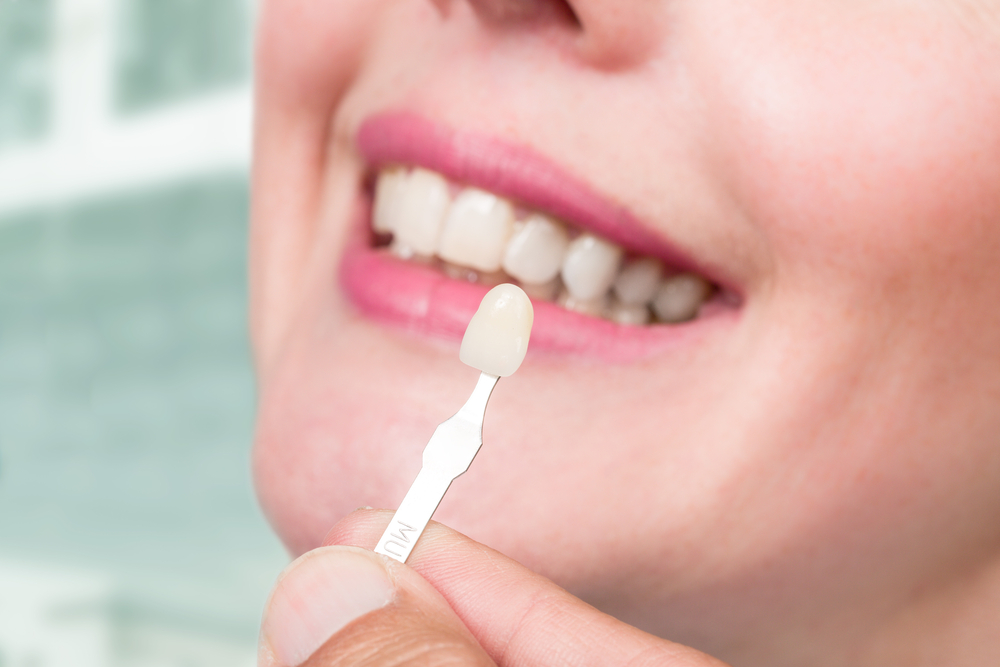
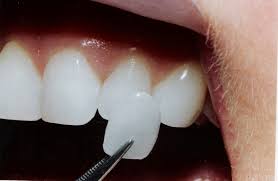
Lumineers
Thinner porcelain laminate to get your smile back.
Lumineers are very thinly shaped porcelain that is bonded to your tooth. The fact that they are very thin allows us to minimize the preparation of the tooth to create beautiful transformations of your teeth.
Due to the fact that there is minimal preparation, there is often little to no discomfort in this procedure. The procedure often requires 1-2 visits.
Veneers
Aesthetic coverage that will shape your smile.
Veneers are an excellent way to redesign and reshape your entire mouth. Veneers are a very thin ceramic shell that covers your existing tooth structure. In placing these new veneers on your teeth, you are able to fix the look of issues such as staining, cracked teeth, spaces, misaligned teeth, chipped teeth and many other issues.
In terms of the process to place veneers, it is a process that takes approximately two to three visits. In the first visit, we will discuss the new shape and look of what we are going to accomplish by placing the veneers. Once we have put a plan in place, we will carefully prepare the teeth for the placement of the new veneers. As we complete this piece of the process, the next step is to take an impression of the newly prepared teeth. This impression will be sent to our laboratory for the final product to be fabricated. We only utilize the highest standard laboratory for fabrication of all of our work. This process at the laboratory takes between 10-14 days. While the new veneers are being fabricated at the lab, we will provide you with a beautiful temporary solution to wear for this time.
As the veneers are finalized, we will make every effort to make sure that your new veneers will feel just like your natural teeth. We will bond them into place ensuring that you can enjoy your new smile for a very long time!
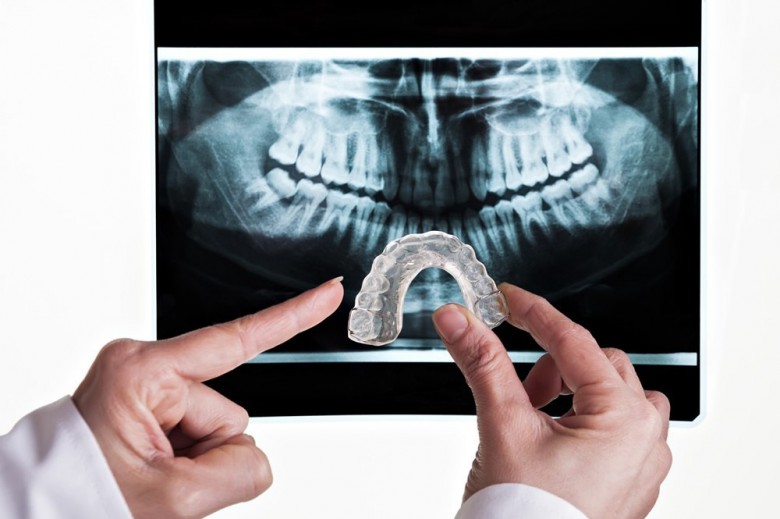
Mouth Guards
Dental, custom mouth guards are the safe choice.
Mouth guards are an essential piece of equipment in contact sports. They should be worn by athletes of all ages who participate in sports such as:
- Football
- Hockey
- Lacrosse
- Wrestling
- Basketball
- Baseball/Softball
- Soccer
- …any sport where contact is a possibility.
Wearing a mouth guard helps prevent against structural damage to your teeth and jaw and also helps prevent injuries such as lacerations to your cheeks, tongue, and lips. Mouth guards have also been shown to help decrease the risk of concussions.
Mouth guards are available in most any sporting goods store, but you should be careful when purchasing a mouth guard. Mouth guards like this do not offer the best level of protection. They are also usually ill-fitting and uncomfortable.
For the highest level of comfort and protection, you should visit your dentist for a custom mouth guard fitting. A custom mouth guard is created specifically for the optimal protection of YOUR mouth. It is created with thin plastic that is hardened to protect your teeth. The thinness of the custom mouth guard allows for easy breathing and also allows for easy communication (especially important for you star quarterbacks calling out the signals).
See your dentist today for a custom mouth guard to protect your teeth and ensure that you maintain the highest level of performance on the field, court, or rink.
Night Guards
The better option when you’re ready for sleep.
Many people are afflicted with bruxism, or teeth grinding. Some people may do this consciously during the day, but it is a larger problem at night while you are asleep. Grinding your teeth can damage enamel, wear down teeth, cause jaw pain, or irritate your gums. The noise from teeth grinding can also disturb your spouse’s sleep if loud enough.
If you grind your teeth you should consider a night guard. The night guard, which is very similar to a mouth guard worn by athletes, provides a barrier between your top and bottom teeth while you sleep. All night guards are custom fitted for comfort and to allow for proper breathing. Your dentist will take an impression of your teeth and have the night guard created by a dental lab. Night guards are very durable and can be used for up to 10 years.
There are also some things that you can do to try to stop teeth grinding. You can train your jaw to be free and easy rather than clenched. Refrain from chewing gum or on other objects like pens. You should also avoid alcoholic drinks and drinks with caffeine, as these can increase the likelihood you will grind your teeth. If you suspect you might be grinding your teeth at night set up an appointment with us today.
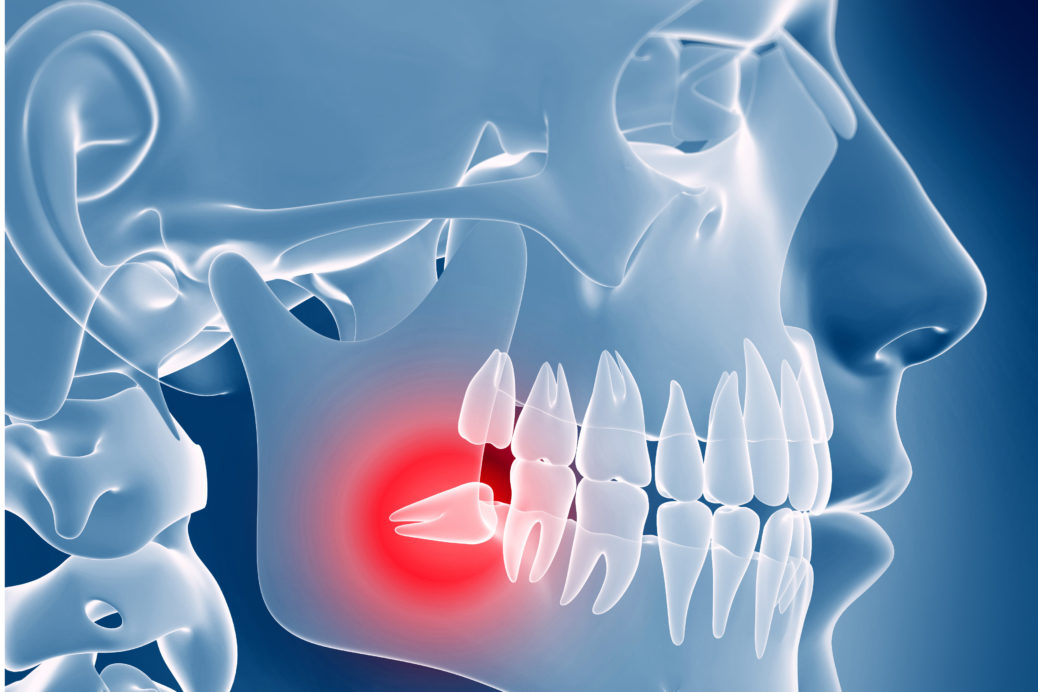


Oral Surgery
Wisdom Teeth/Impacted Extraction
Wisdom teeth are the third and final set of molars that emerge, usually during your late teens to early twenties. For some people the wisdom teeth emerge through the gums and have enough room to grow in naturally. For others, wisdom teeth often cause problems as they are trying to protrude through the gums. When a wisdom tooth is impacted the tooth is coming in at an angle and not straight through the gum line. This can cause pain, the tooth can come in unevenly, or the tooth may only emerge partially.
Impacted wisdom teeth can cause structural damage to the jaw and other teeth. They can also provide a place for bacteria to gather since they are hard to reach and clean. These potential problems make it necessary to remove impacted wisdom teeth so that larger problems do not arise. Routine x-rays during a dental exam can reveal if you will need to have your wisdom teeth removed.
Please see our Patient Resources Section for post-op instructions and what to expect.
Extraction Site Preservation
When removing a tooth it is important to consider what will be done with the empty space after that tooth is removed. Wisdom teeth are in the back of the mouth, so that site will heal on its own with no complications. If it is necessary to remove another tooth, plans must be made. If a tooth is removed and nothing is done with the extraction site, the jaw bone will degenerate and change shape during healing and can cause your teeth to shift. This can create problems in your bite and affect your ability to speak and chew.
If you want to fill the space with a dental implant, a sturdy jaw bone is necessary to install the implant. If you opt for a dental bridge, the bridge must be molded and placed before the teeth shift.
Your dentist is always open to a conversation on what you would like to do with your extraction site before removing a tooth. They will be able to make a recommendation and layout a treatment plan. Make sure to schedule follow up appointments to properly care for your extraction site.
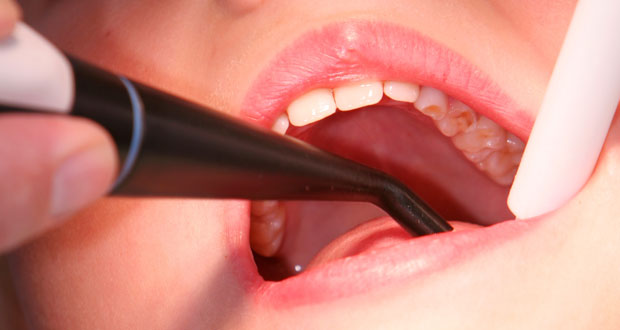
Sealants
Preventative action equals greater protection.
Sealants are a great way to protect against tooth decay and cavities on your back teeth (molars). These are the teeth that are most vulnerable to cavities and decay because they are used in the chewing process, and are the most difficult to reach and clean. Molars first come in at around 5-7 years of age, with a second set coming in between the ages of 11-14. It is best to have a sealant placed when the molars first come in to ensure they are protected early.
To place a sealant an adhesive is first applied to the teeth. The sealant is then placed over the adhesive as a liquid, as if it is painted right onto the tooth. The liquid then hardens and creates a barrier between your tooth and any plaque, food particles, and bacteria. Sealants last for about 10 years and can be reapplied if necessary.

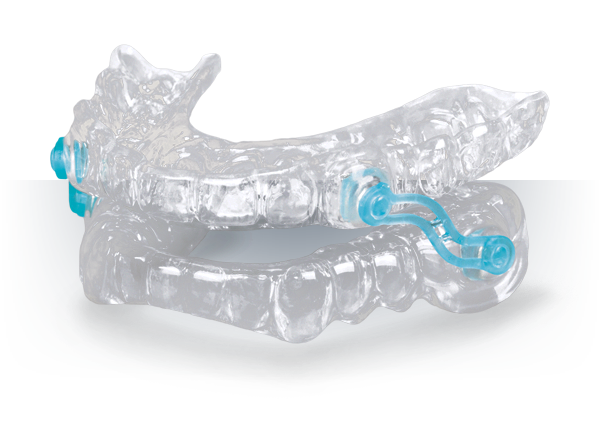
Sleep Apnea
A custom dental appliance is the less intrusive sleep solution.
No one wants to wear any type of CPAP machine. A custom made dental appliance designed with improving your night time breathing position, is a strong possibility for anyone with mild to moderate sleep apnea.
Advantages of a custom dental appliance
- CPAP machine is loud.
- Custom made to fit, while CPAP machine has a few sizes of masks.
- It easily portable.
- Dental appliance is not anywhere near as intrusive as a CPAP machine.
- It is just two easy visits to make.

Teeth Whitening
Keeping your teeth their whitest and your smile its brightest.
Dr. Samer K. Riad offers many options for whitening your teeth:
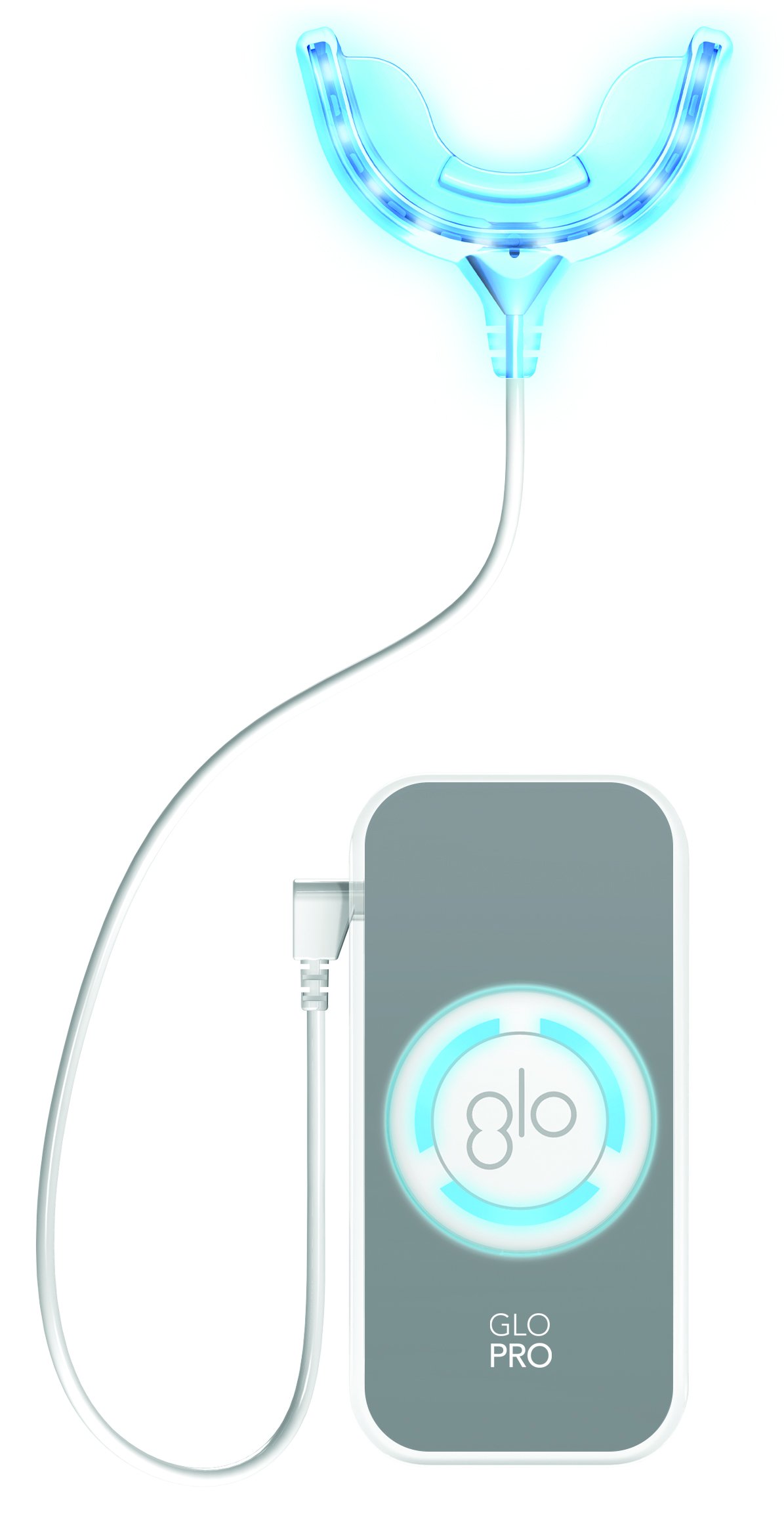

GLO Science®
GLO Science’s patented Guided Light Optics (GLO) innovation combines warming heat + light in a closed-system mouthpiece, activating the professional strength whitening gel & prevents oxygens from escaping the mouth for stress-free results.
- Fast
- Affordable
- Painless
- Dramatic long-lasting results
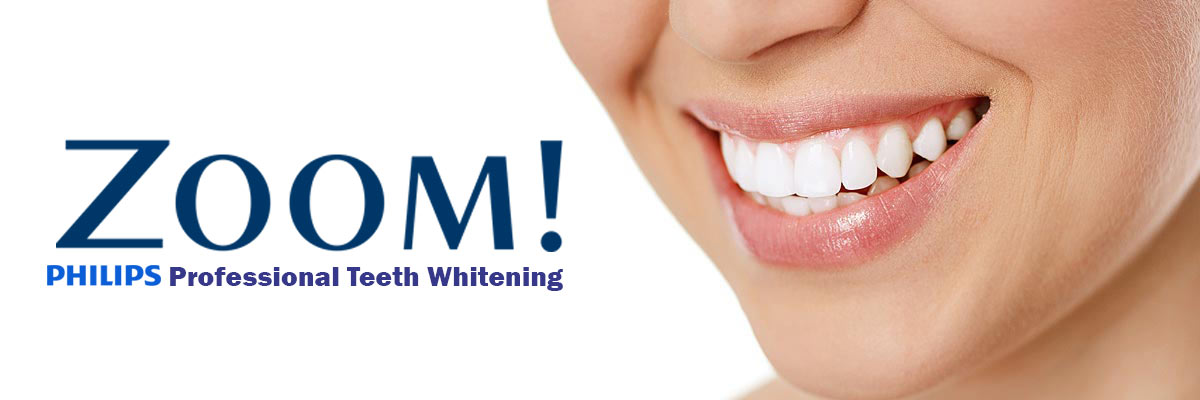
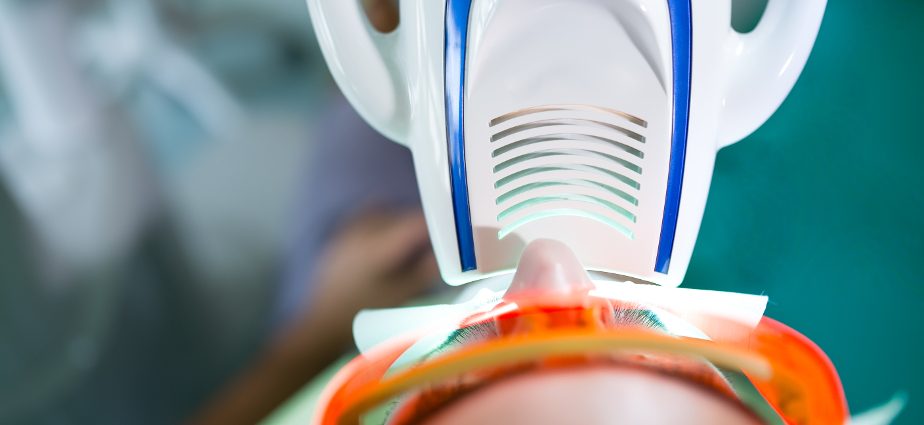
Phillips Zoom!
The No.1 patient-requested professional whitening brand. The only whitening system that uses ACP (amorphous calcium phosphate) to deliver a gentle experience and whiter results for our patients at an effectiveness that matches value.
